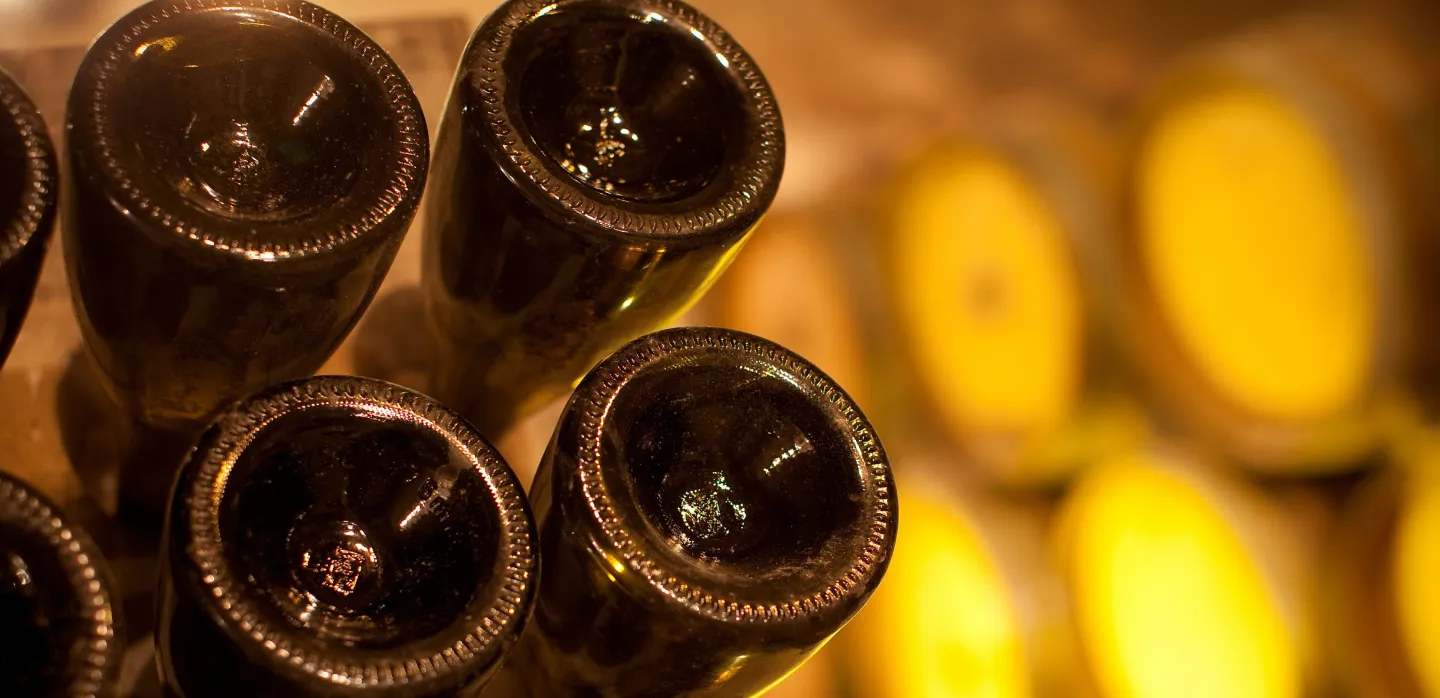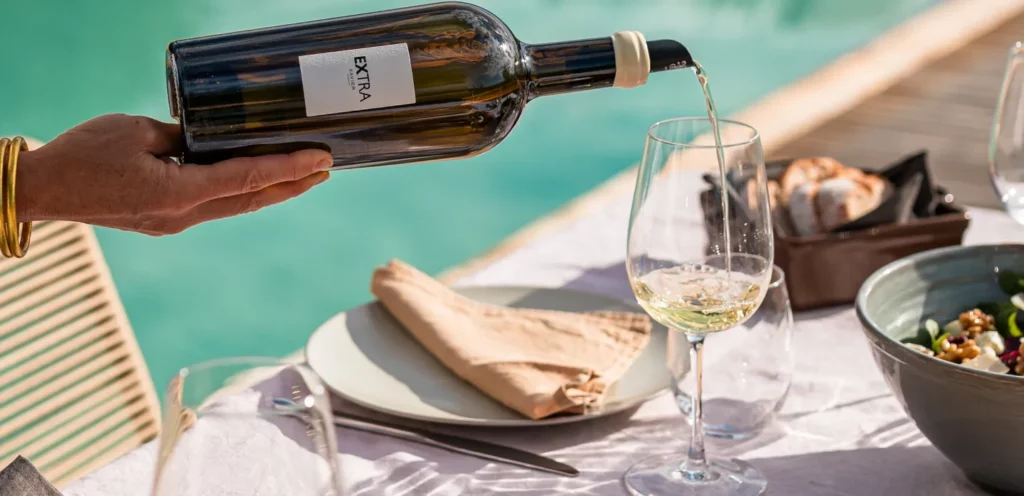Opening a bottle of wine is never just opening a bottle. It’s often the highlight of a dinner, the grand finale of an apéro with friends, or that little treat you’ve been saving for “a special occasion.” But let’s be honest—none of that magic works if the wine’s been poorly stored.
Summer, with its scorching heat and wild swings in temperature from day to night, can really put your wine collection to the test. To ensure your bottles don’t suffer under the sun, here are a few simple habits and smart tips to help preserve all the aromas, flavors, and finesse—yes, even in a full-blown heatwave. Ready? Let’s dive in.
𝐓𝐞𝐦𝐩𝐞𝐫𝐚𝐭𝐮𝐫𝐞: 𝐬𝐭𝐚𝐛𝐢𝐥𝐢𝐭𝐲 𝐢𝐬 𝐤𝐞𝐲
When it comes to wine, heat is public enemy number one, especially during sudden temperature swings. A bottle that goes from hot to cold and back again won’t age gracefully. It can lose its freshness and, in some cases, even oxidize much too early. Not ideal.
The golden rule? Keep your bottles at a steady temperature, ideally between 12°C and 14°C. Of course, not everyone has a climate-controlled wine cellar at home (if only!). But if you can manage to store your wines somewhere between 12°C and 20°C without major fluctuations, you’re already doing a pretty solid job.
Just steer clear of hot spots at all costs: sunny windowsills, behind glass doors, overheated kitchens, next to radiators… and please, no garages that turn into saunas or damp laundry rooms.
At Xavier Vignon, we usually recommend investing in a wine fridge, as it’s the easiest way to maintain stable conditions. But if that sounds like too much, don’t worry: a dark cupboard in a cool, quiet room will do the trick nicely.
𝐇𝐮𝐦𝐢𝐝𝐢𝐭𝐲: 𝐭𝐡𝐞 𝐮𝐧𝐬𝐮𝐧𝐠 𝐡𝐞𝐫𝐨
It doesn’t get discussed much, but humidity plays a significant role in keeping your wine happy. Air that’s too dry can shrink corks, letting oxygen sneak in, and when that happens, say goodbye to freshness and hello to premature oxidation (and sometimes even leaks).
On the flip side, too much humidity can lead to mold on labels and corks. It’s not exactly the look you’re going for!
Ideally, you want to keep humidity between 60% and 75%. But don’t panic; unless you’re ageing a serious collection, there’s no need to go full pro with fancy gear. Just be mindful of where you store your bottles: avoid rooms that are too dry (think constant AC) or too damp, like a musty cellar or a steamy laundry room.
𝐋𝐢𝐠𝐡𝐭: 𝐭𝐡𝐞 𝐬𝐢𝐥𝐞𝐧𝐭 𝐞𝐧𝐞𝐦𝐲
Wine is highly sensitive to light, particularly direct sunlight and UV rays. Prolonged exposure can alter its color, diminish its aromatic intensity, and compromise its structure.
That’s why most bottles are made from tinted glass, to offer some protection. Still, this isn’t enough if the wine is stored in daylight or under harsh artificial lighting.
Our advice: store your bottles in the dark whenever possible. A closed cupboard, a dedicated cabinet, or a wine fridge are all excellent options. And if your bottles are on display, choose shaded areas and avoid direct lighting.
𝐁𝐨𝐭𝐭𝐥𝐞 𝐩𝐨𝐬𝐢𝐭𝐢𝐨𝐧𝐢𝐧𝐠: 𝐚 𝐤𝐞𝐲 𝐝𝐞𝐭𝐚𝐢𝐥
You’ve probably seen them in interior design catalogues, those beautifully styled shelves where wine bottles are displayed upright, like in a bar or a trendy restaurant. Elegant? Maybe. Practical? Definitely not.
For wines sealed with natural cork (as is the case for most Xavier Vignon wines), horizontal storage is essential. Why? Because the wine needs to stay in contact with the cork to keep it moist and airtight. A dry cork shrinks, letting in air, which leads to oxidation, loss of freshness, and sometimes off-flavours.
On the other hand, bottles sealed with screw caps or synthetic corks can be stored upright without any issue.
𝐖𝐚𝐭𝐜𝐡 𝐨𝐮𝐭 𝐟𝐨𝐫 𝐯𝐢𝐛𝐫𝐚𝐭𝐢𝐨𝐧𝐬
It might sound trivial, but constant vibrations can disrupt the natural ageing process of wine. They prevent sediments from settling properly, interfere with the wine’s stability, and ultimately affect how it evolves in the bottle.
To avoid this, avoid storing bottles on top of a washing machine, a noisy fridge, or a wobbly shelf. Proper storage also means letting the wine rest quietly and undisturbed.
𝐇𝐨𝐰 𝐝𝐨 𝐲𝐨𝐮 𝐬𝐭𝐨𝐫𝐞 𝐚𝐧 𝐮𝐧𝐟𝐢𝐧𝐢𝐬𝐡𝐞𝐝 𝐛𝐨𝐭𝐭𝐥𝐞?
In summer, it’s not unusual to open a good bottle on the spur of the moment without necessarily finishing it. If that’s the case, and you don’t have a fancy wine-preservation system on hand, no worries: simply re-cork the bottle and pop it in the fridge (yes, even red wine). The cold will help slow down oxidation.
Store it upright, and aim to finish it within 2 to 3 days.
𝐊𝐞𝐞𝐩 𝐢𝐭 𝐬𝐢𝐦𝐩𝐥𝐞 (𝐚𝐧𝐝 𝐬𝐞𝐧𝐬𝐢𝐛𝐥𝐞)
Proper storage is the first step toward enjoying a wine at its best. And the good news? It doesn’t have to be complicated. By following a few basic principles, such as keeping a stable temperature, darkness, and moderate humidity and storing bottles on their side, you’re already doing a lot to preserve both the life and quality of your wines.
If you’re unsure, feel free to reach out to our team. We’ll be happy to help you find the best storage solution. After all, our wines are made to be shared… and well looked after.
Cheers!



